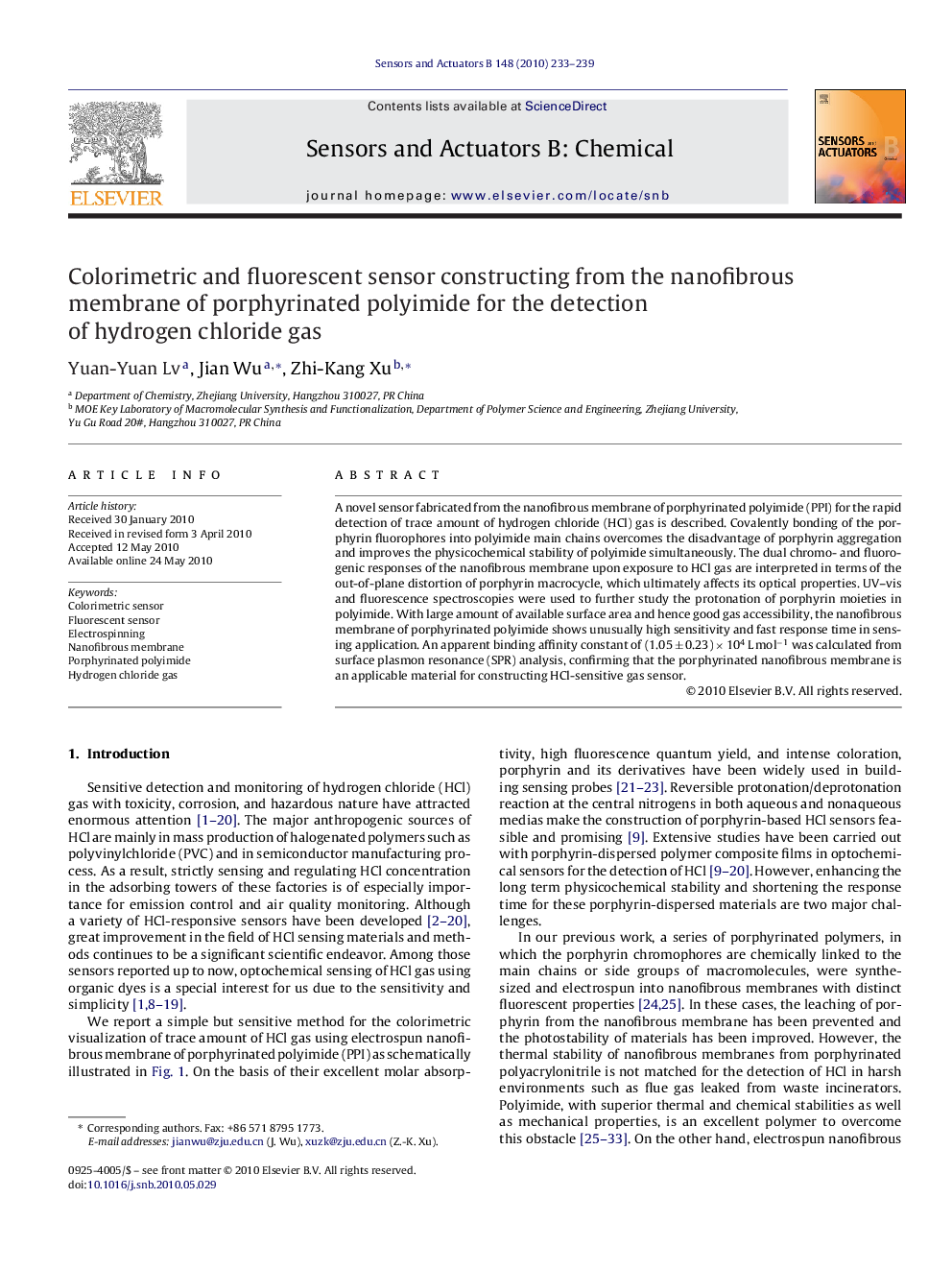| Article ID | Journal | Published Year | Pages | File Type |
|---|---|---|---|---|
| 751232 | Sensors and Actuators B: Chemical | 2010 | 7 Pages |
A novel sensor fabricated from the nanofibrous membrane of porphyrinated polyimide (PPI) for the rapid detection of trace amount of hydrogen chloride (HCl) gas is described. Covalently bonding of the porphyrin fluorophores into polyimide main chains overcomes the disadvantage of porphyrin aggregation and improves the physicochemical stability of polyimide simultaneously. The dual chromo- and fluorogenic responses of the nanofibrous membrane upon exposure to HCl gas are interpreted in terms of the out-of-plane distortion of porphyrin macrocycle, which ultimately affects its optical properties. UV–vis and fluorescence spectroscopies were used to further study the protonation of porphyrin moieties in polyimide. With large amount of available surface area and hence good gas accessibility, the nanofibrous membrane of porphyrinated polyimide shows unusually high sensitivity and fast response time in sensing application. An apparent binding affinity constant of (1.05 ± 0.23) × 104 L mol−1 was calculated from surface plasmon resonance (SPR) analysis, confirming that the porphyrinated nanofibrous membrane is an applicable material for constructing HCl-sensitive gas sensor.
